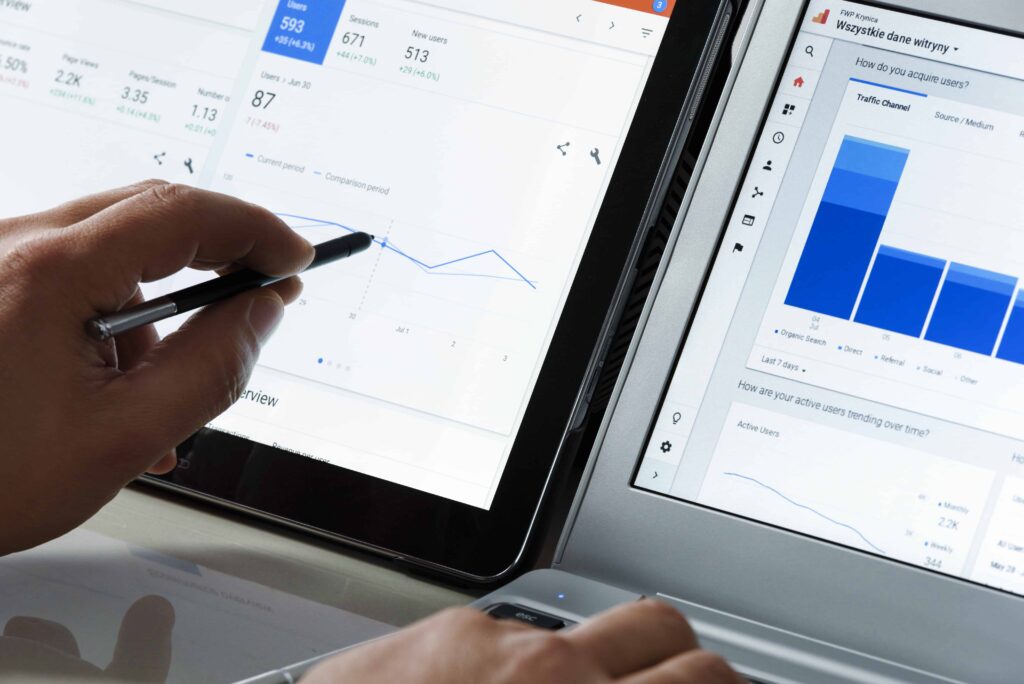Pay-Per-Click (PPC) Advertising
Unlock the (open) secrets of an easy-to-manage probability model that can bring your business a fast ROI.
What is Pay-Per-Click Advertising? A Novel
Rather than give a dry explanation of what PPC is, we’re going to walk you through a case example:


What PPC Means
Every time somebody sees your ad, you don’t pay for them seeing your ad, you pay for them clicking on your ad. You’ll bid a certain amount of money, up to X amount of dollars for this particular keyword (or this particular audience to click on my keyword, if it’s display or paid social). And, based on that, and based on your daily budget, you will spend a certain amount of money and you will receive a stream of traffic from interested people.
So that could be clicks to your website. That could be filling out a form if you have, what’s called a lead gen campaign, which is common and Facebook and Google actually has something like that as well.
These are different types of models, but the idea is ultimately the same: that you’re paying per click and that you get a certain amount of clicks per day, based on your daily budget.
Example: Car Dealership
You are selling a cars at an average of $7,500 per car. Let’s say we want to be profitable at about 50%.
Our initial budget for the campaign: $3,000 budget. Divided by 30 days, we’ll be spending $100 a day on this campaign.
The average click for this campaign we’ll estimate at $5 because the car market is a competitive one.
**However, part of our strategy will be to keep the Cost-Per-Click (CPC) as low as possible. This is done through research of long-tail keywords and keywords with a good volume that may have eluded other campaigns, keeping their cost low.
$100 at $5 a click = 20 clicks per day.
Of these 20 clicks that we shall aim at an initial conversion rate of 5%. That’s a conservatively low conversion rate. A site should want 10 to 15%
5% of 20 = 1 conversion
So that means we’ll get 1 conversion per day.

What Is a PPC Conversion?
A conversion in PPC is not necessarily the same as a conversion in sales (unless you’re an eCommerce). What that means is you’ve gotten one lead form or phone call.
So, with our 1 conversion, we should expect to get 30 conversions per month.
Evaluating the ROI
30 conversions (read: leads) a month spending $3,000, right? Or a cost per lead of $100. But what about sales?
We can expect a higher percentage of sales due to the actions of the people who took the time to send us an email or give us a call. So let’s say conservatively that only 20% of people who filled out a form are actually going to buy.
20% of 30 leads = 6 car sales
Okay. So we made six sales off of $3,000. This is actually conservative, but if you’re skeptical lower it, to say 5 sales a month.
Still too optimistic? Say two, you made two sales at $7,500 forgetting the math that we just went through.
2 sales at $7,500. You just made $15,000. $15,000 off of $3,000 spent.
If we return to our original number of sales per month of 5, you would have made $37,500!
Now we’re achieving ROI.

If It’s That Simple, Why Doesn’t It Always Work?
Most campaigns fail for 1 of 2 reasons: poor planning or poor execution.
Reason #1: Poor Planning
Perhaps you’re not selling cars, few people are. So perhaps you’re selling some online courses. And your courses are $250 per course.
Let’s do the math again. We’ll use $3,000, but we’re going to change it to a $250 price per point. Every other variable stays the same.
6 x $250 = $1,500
With our campaign of $3000, we just lost $1,500. Now it’s not making sense anymore.


Reason #2: Poor Execution
Bad Keywords
Through lazy or inexpert keyword selection, we are spending too much per keyword. Now we’re getting 13 clicks per day. Or the volume of keywords I selected in order to save money per click isn’t sufficient to make my other numbers work. Either way, the volume is low.
Bad Ads
Are they generic ads that no one responds to? Or are they specific but don’t either the searches performed or the landing page they arrive at?
Bad Landing Pages
Do they convey the message? Is there a clear call to action?
Bad Sales Team
This is an internal metric, but it’s one you can track with call tracking or email response rates.
To learn more about whether PPC is right for your business, or if you’re looking to improve your current campaigns, contact us today for a free online presence analysis.

